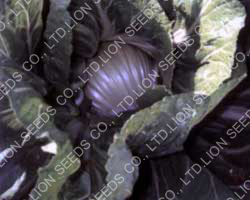
Chinese Mustard – Action
The large petioles produce very big, firm and uniform round head, leaf are large and thick, providing very high yield.
Can harvest 50-60 day form sowing. Tolerant to Downy Mildew disease.
CHINESE MUSTARD FACTS: Brassicaceae, also called Cruciferae, the mustard family, of the caper order (Capparales), a large assemblage of 350 genera of mostly herbaceous plants with peppery-flavoured leaves. The family includes many plants of economic importance that have been extensively altered and domesticated by humans. The members’ flowers are in the form of a Greek cross, with four petals, usually white, yellow, or lavender, and an equal number of sepals. There are four long and two short stamens and a two-chambered ovary positioned above the other flower parts. The seeds are produced in podlike fruits and often have a mucilaginous coating that swells when wetted.
The most important genus is Brassica, with about 40 Old World species and including the cabbages, mustards, and rapes. One species, B. oleracea, has many edible varieties, such as broccoli, Brussels sprouts, cabbage, cauliflower, kale, and kohlrabi. B. rapa is the turnip, and B. napobrassica is the Swedish turnip, or rutabaga. B. napus isthe rape plant. The leaves of B. napus are used in salads and for cattle forage, and the seeds are added to birdseed mixtures and also are pressed for canola oil. The species B. pekinensis and B. chinensis are Chinese cabbage. The seeds of B. juncea are the source of the condiment mustard. Oil is derived from the seeds of B. campestris (sometimes considered B. rapa), B. hirta, and B. juncea. Black mustard (B. nigra) seeds were formerly another source of table mustard. The plant, native in Eurasia and naturalized in North America, is a widespread weed.
The most important genus is Brassica, with about 40 Old World species and including the cabbages, mustards, and rapes. One species, B. oleracea, has many edible varieties, such as broccoli, Brussels sprouts, cabbage, cauliflower, kale, and kohlrabi. B. rapa is the turnip, and B. napobrassica is the Swedish turnip, or rutabaga. B. napus isthe rape plant. The leaves of B. napus are used in salads and for cattle forage, and the seeds are added to birdseed mixtures and also are pressed for canola oil. The species B. pekinensis and B. chinensis are Chinese cabbage. The seeds of B. juncea are the source of the condiment mustard. Oil is derived from the seeds of B. campestris (sometimes considered B. rapa), B. hirta, and B. juncea. Black mustard (B. nigra) seeds were formerly another source of table mustard. The plant, native in Eurasia and naturalized in North America, is a widespread weed.
